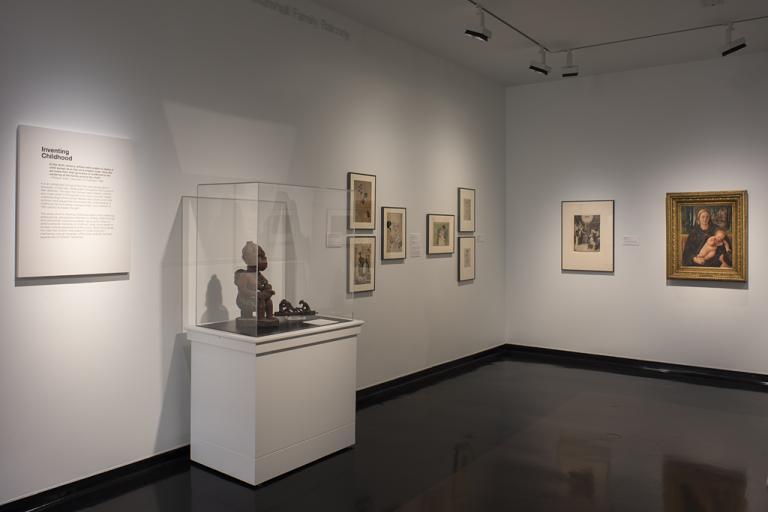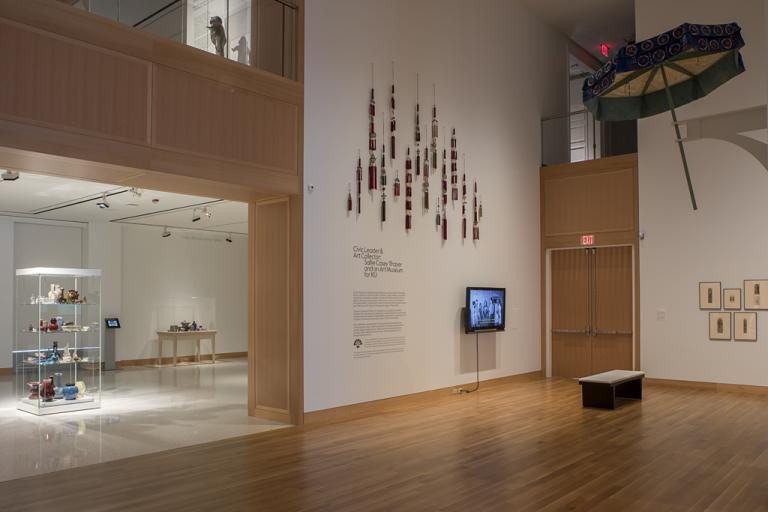Laughing Girl, Robert Henri
Artwork Overview

Canvas/Support (Height x Width x Depth): 61 x 50.8 cm
Canvas/Support (Height x Width x Depth): 24 x 20 in
If you wish to reproduce this image, please submit an image request
Images
Label texts
Sallie Casey Thayer purchased this painting along with several others in 1913 from Macbeth Gallery in New York. Established by Irish immigrant William Macbeth in 1892, the gallery sought to promote American artists, and it supported the careers of many, including Robert Henri. In 1908, Henri and the group of artists known as The Eight brought the gallery lasting renown by staging an independent exhibition to counter the restrictive policies of the National Academy of Design. The exhibition featured a recent painting created by Henri during a stay in Holland. Titled Laughing Child (1907), the work offered a contemporary response to Dutch 17th-century portraiture. Gertrude Vanderbilt Whitney acquired it, despite a lack of favorable acclaim to its depiction of a workingclass child. Henri subsequently produced a series of such spirited portraits. This later painting similarly captures the character of an exuberant young girl with its rapid brushwork suggesting spontaneous energy.
Sallie Casey Thayer purchased this painting along with several others in 1913 from Macbeth Gallery in New York. Established by Irish immigrant William Macbeth in 1892, the gallery sought to promote American artists, and it supported the careers of many,
including Robert Henri. In 1908, Henri and the group of artists known as The Eight brought the gallery lasting renown by staging an independent exhibition to counter the restrictive policies of the National Academy of Design. The exhibition featured a recent painting created by Henri during a stay in Holland. Titled Laughing Child (1907), the work offered a contemporary response to Dutch 17th-century portraiture. Gertrude Vanderbilt Whitney acquired it, despite a lack of favorable acclaim to its depiction of a workingclass child. Henri subsequently produced a series of such spirited
portraits. This later painting similarly captures the character of an exuberant young girl with its rapid brushwork suggesting spontaneous energy.
Tap the Web icon above and click on the link to view another Laughing Child (1907). Acquired by Gertrude Vanderbilt Whitney, it now resides in the collection of the Whitney Museum of American Art.
As children became the central focus of the 19th-century Western family, they were increasingly featured as the subjects of formal portraits, infusing the canvas with a playfulness and honesty that delighted many artists. The Laughing Girl in Henri’s portrait speaks to the realities of 19th-century America, and especially the artist’s journalistic desire to record the social injustices of modern city life. While other artists portrayed the offspring of well-to-do patrons, Henri’s subjects were often working-class children. The lack of this child’s name in the title may indicate his practice of dressing up street children with studio props such as this pearl necklace. Indeed, Henri was a member of the Ash Can School, a group of artists in the 19th century who were best known for depicting gritty scenes of everyday urbanism.
Samuel Waugh’s portrait, around the corner to the right, offers a realistic glimpse into the everyday life of another 19th-century American family. Although Mrs. Stiles attempts to heed her nearby Bible, her attention wanders to her grandchild who plays with a
toy horse and cart, guiding the team with a whip.
As children became the central focus of the 19th-century Western family, they were increasingly featured as the subjects of formal portraits, infusing the canvas with a playfulness and honesty that delighted many artists. The Laughing Girl in Henri’s portrait speaks to the realities of 19th-century America, and especially the artist’s journalistic desire to record the social injustices of modern city life. While other artists portrayed the offspring of well-to-do patrons, Henri’s subjects were often working-class children. The lack of this child’s name in the title may indicate his practice of dressing up street children with studio props such as this pearl necklace. Indeed, Henri was a member of the Ash Can School, a group of artists in the 19th century who were best known for depicting gritty scenes of everyday urbanism.
Samuel Waugh’s portrait, around the corner to the right, offers a realistic glimpse into the everyday life of another 19th-century American family. Although Mrs. Stiles attempts to heed her nearby Bible, her attention wanders to her grandchild who plays with a
toy horse and cart, guiding the team with a whip.
Robert Henri (pronounced HEN-rye) emphasized the pride in humanity that he believed existed within children. Through quick brushstrokes, planes of pure color, and thick layers of oil paint, he captures the feeling of childhood as well as the personality of his subject. This sense of authenticity in painting grew out of a journalistic need to record the social injustices of modern city life. Henri was a member of the Ash Can School, a group of artists in the 19th century who were best known for depicting gritty scenes of everyday urbanism. While other artists portrayed the offspring of well-to-do patrons, Henri’s subjects were often working-class children. The lack of the child’s name in the title may indicate his practice of dressing up street urchins with studio props such as this pearl necklace.
Exhibition Label:
"Corpus," Apr-2012, Natalie Svacina
Robert Henri (pronounced HEN-rye) emphasized the pride in humanity that he believed existed within children. Through quick brushstrokes, planes of pure color, and thick layers of oil paint, he captures the feeling of childhood as well as the personality of his subject. This sense of authenticity in painting grew out of a journalistic need to record the social injustices of modern city life. Henri was a member of the Ash Can School, a group of artists in the 19th century who were best known for depicting gritty scenes of everyday urbanism. While other artists portrayed the offspring of well-to-do patrons, Henri’s subjects were often working-class children. The lack of the child’s name in the title may indicate his practice of dressing up street urchins with studio props such as this pearl necklace.
Label Aug-2007:
This painting, one of his many portraits of children, shows Henri's ability to capture the character of his sitters. His rough style pays particular attention to the lighting contrast of his subject. Henri often expressed his view of art and life by saying: "The beauty in a work of art is in the work itself."
Henri (pronounced "hen-rye" with a decidedly American flavor) initially studied at the Pennsylvania Academy, but left in 1888 for Paris where he studied at the Academie Julian. He disliked academic methods that were concerned with detail and realistic representation; however, the avant-garde style of impressionism, characterized by its attempt to capture the eye's initial understanding of light, atmosphere, and movement, appealed to him. Two years later, Henri returned to Philadelphia where he joined a group of young American painters self-proclaimed "The Eight." This group, which included George Luks, became known as "The Ash Can School," so-named for their realistic portrayal of urban life in America.
Archive Label 1999:
Henri (pronounced "hen-rye" with a decidedly American flavor) initially studied at the Pennsylvania Academy, but left in 1888 for Paris where he studied at the Academie Julian. He disliked academic methods that were concerned with detail and realistic representation; however, the avant-garde style of impressionism, characterized by its attempt to capture the eye's initial understanding of light, atmosphere, and movement, appealed to him. Two years later, Henri returned to Philadelphia where he joined a group of young American painters self-proclaimed "The Eight." This group, which included George Luks, became known as "The Ash Can School," so-named for their realistic portrayal of urban life in America.
This painting, one of his many portraits of children, shows Henri's ability to capture the character of his sitters. His rough style pays particular attention to the lighting contrast of his subject. Henri often expressed his view of art and life by saying: "The beauty in a work of art is in the work itself.









